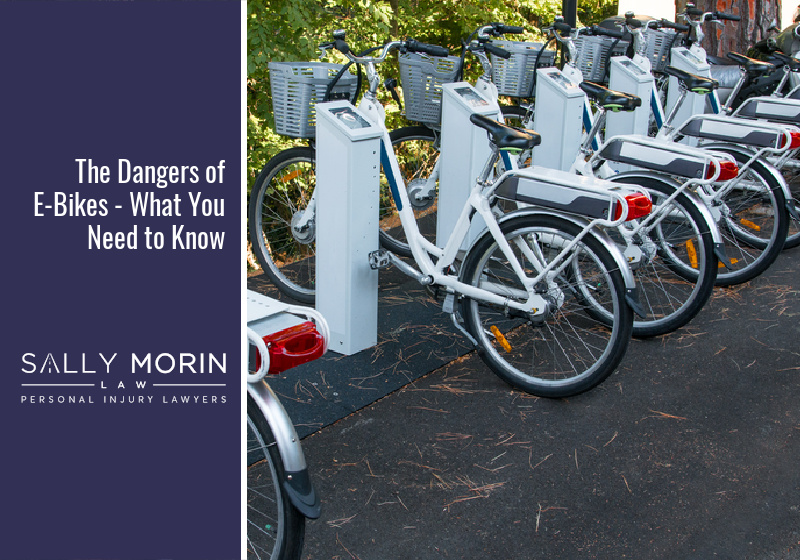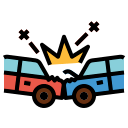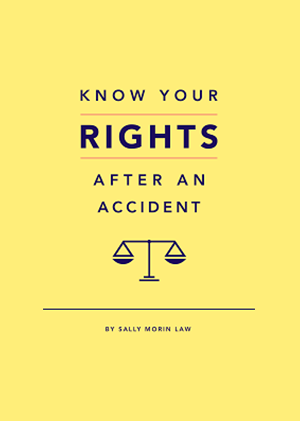E-bikes are enormously popular here in California, and it’s easy to see why. They’re speedy, fun, and much more cost-effective than cars.
But from a bicycle injury attorney’s point of view, e-bikes are dangerous. They can reach top speeds of almost 30 mph and tend to travel dangerously close to fast-moving cars.
Faster, Heavier, and More Injury-Prone
An e-bike safety study found e-bikes come with a distinct pattern of severe injuries not found in other types of bike and scooter accidents.
- E-cyclists are more likely to be hospitalized for their injuries than other riders.
- Compared to scooter users and traditional cyclists, e-cyclists were three times more likely to hit a pedestrian.
- In accidents, 17.5% of e-cyclists suffered internal injuries compared to 7.5% of bicyclists and 7.5% of scooter riders.
E-bikes deliver a level of power that’s unexpected for inexperienced riders. People who are used to pedaling a good old 5-speed might be caught off guard to discover how much faster an e-bike can go.
Some safety experts have theorized that e-bikes come into closer contact with pedestrians because people tend to ride e-bikes on sidewalks — unlike scooters, for example, which are often ridden on roadways. Closer pedestrian proximity creates more dangerous situations.
Plus, motorists don’t always give bicyclists the respect they deserve. Drivers sometimes act like they own the roads, putting e-cyclists’ safety at risk.
Do You Know California’s E-Bike Classifications?
Before you ride an e-bike, know its pros and cons. An e-bike is fast, but is it too fast for you to control? It’s cost-effective, but an e-bike can also be a target for thieves in cities like LA and San Francisco.
Also, make sure you know the law. Below are the three classifications under which your e-bike will be classified under California law.
- Class 1: E-bike has a pedal-assisted motor that stops helping at 20 mph.
- Class 2: E-bike has a pedal-assisted motor to 20 mph plus a purely throttle-powered mode.
- Class 3: Pedal assistance continues until the e-bike hits 28 mph.
Class 3 electric bicycles, meaning those with top assisted speeds of 28 mph, are forbidden from using trails or bike paths unless allowed by local authorities. But class 3 e-bikes can usually enter bike lanes or separated bikeways when they are directly adjacent to the roadway under California Vehicle Code Section 21207.5.
Class 1 and 2 electric bicycles are allowed wherever regular bikes are allowed unless a sign specifically prohibits them. This is important to keep in mind when you’re in a big city like San Francisco or LA, both of which have enacted their own rules. Keep an eye out for signs!
Your e-bike must also be roadworthy under the state’s bike laws, meaning it must include safety equipment like:
- Handlebars installed no higher than the rider’s shoulders
- Brakes that allow a one-handed stop on level pavement
- A permanent, affixed seat
- Lights at night, including a white headlight attached to either the e-bike or the cyclist
- Reflectors, including a red reflector on the back, white or yellow reflectors on each pedal or the rider’s feet, white or yellow reflectors on the front of the e-bike, and a red or white reflector on both sides of the back of the e-bike
Helmets are mandatory for cyclists under the age of 18. Headphones and earbuds must leave one ear free in California. Bicyclists are also legally prohibited from carrying items on their bikes, including passengers, that will create safety hazards while driving.
All bikes, including e-bikes, must be properly sized so that riders can stop and support the bike with one foot on the ground. Sizing is important because cyclists must come to complete stops at many points during the ride, like at traffic lights.
Were You in an E-bike Accident? Take Action!
If you’re injured on your e-bike, it’s worth talking to a personal injury lawyer as soon as possible. California has many laws that protect e-cyclists, and you’re legally entitled to seek compensation from someone who hurts you.
For example, at Sally Morin Personal Injury Lawyers, we helped a client who was hit while riding his e-bike in San Francisco land a $70,000 settlement despite the city’s strict bike laws. This kind of victory can be huge for someone who’s struggling to move forward with their life after a traumatic e-bike accident.
Did someone hurt you? We’re here to help e-cyclists. Here at Sally Morin Personal Injury Lawyers, most of us are cyclists ourselves. We truly care about protecting your rights. Call (415) 413-0033 or get a FREE online case evaluation now.
We Handle Your Accident Claim So You Can Focus on Your Life
After a personal injury, contact the attorneys at Sally Morin Personal Injury Lawyers. We handle many areas of the law, including e-bike injuries. We believe you should be able to focus on recovering while we handle the legal details. We truly care about the people of California. Contact us today for a free online case evaluation.











